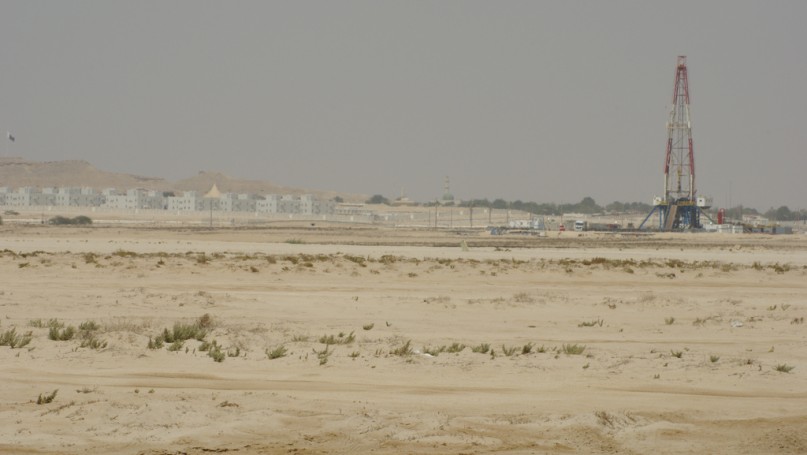
Buraimi: The Struggle for Power, Influence and Oil in Arabia
By Michael Quentin Morton
London and New York: I. B. Tauris, 2013
Buraimi, a remote oasis on the south-east tip of the Arabian Peninsula, seemed in the early 1950s an unlikely spot for an international confrontation; few Americans knew it even existed. Roughly circular, and about six miles across, it had a population of between six and ten thousand inhabitants clustered in nine villages, three of them controlled by Abu Dhabi and the rest by the sultan of Muscat and Oman. Buraimi was blessed with abundant water and a fertile soil, which provided the villagers with a variety of fruits and crops and pasture for their livestock. Most important, however, was its strategic location at important crossroads: whoever held it controlled the approaches to Muscat and Oman. These facts were well known to the king of Saudi Arabia, Ibn Saud, who, in August 1952, supported by the Arabian American Oil Company (ARAMCO), sent his troops to occupy the oasis. Like most of its Persian Gulf neighbors, Buraimi held the promise of new oil reserves. For Britain, however, it was yet another example of the United States poaching on their turf using local leaders and rulers, having just forced Britain out of Egypt and Iran.
While known among scholars, Morton’s book is the first work focusing on the disputes connected to the oasis. As Morton points out, Buraimi had been contested since the early 19th century, where Saudi Arabia, although not able to establish a long term presence, never ceased to claim the oasis as its own. “Nonetheless, the Wahhabi presence was disorganized and sporadic, and in 1927 the tax collectors disappeared from Buraimi once more” (p. 6). Morton notes that, before the oil companies showed any interest, “The Buraimi Oasis was of particular interest to the Saudis because of the slave trade” (p. 43). This trade had even continued after the Second World War. Furthermore, Morton paints on such a broad canvas in this book that it is not only a history of Buraimi, but also a longitudinal study of the south-eastern Arabian Peninsula. Incidentally, it takes much of the book before Buraimi becomes the focus of this, at times, meandering study. Before occupying the oasis, Morton observes, “the only real evidence of a Saudi presence in the village was a handful of Saudi merchants engaged in the slave trade and a crumbling fort known to the locals as the Castle of the Najdis” (p.93).
On the United States role in the dispute Morton notes, “the Americans wanted to preserve their interests in Saudi Arabia without threatening British hegemony in the Persian Gulf” (p. 111). Unfortunately, Morton is unable to delineate American policy towards the conflict over Buraimi, partly because he jumps back and forth chronologically and thematically, and partly because of his contradictory presentation of US policy. For example, after explaining that the US is supporting Britain, Morton on the following page describes the US as being in an anti-colonialist mode, supporting Saudi Arabia over Buraimi. He also omits key episodes; for instance, the British Foreign Office twice, during the spring of 1954, threatening to kill any Americans found in the oasis. While Morton is good at bringing local colour to the story, he (at best) ignores or fails to understand the American dimension of the crisis. Later, in October 1955, Britain reoccupied the oasis and evicted the Saudis, without informing or consulting the United States, much to the annoyance of the Eisenhower administration. When failing to notify the United States of the planned reoccupation of Buraimi, Morton explains, “Of all the decisions that the British government took during the Buraimi dispute, this upset the Americans the most” (p. 180). This may well be the case, but Morton does not explain why. In sum, this was a very serious Anglo-American cleavage that played a large part in American counter-measures and the rupture of the Atlantic Alliance during the Suez crisis of 1956.[1] Morton’s story is curiously fragmented and somewhat incomplete after the British reoccupation of Buraimi in October 1955.
Still, Morton is certain of the importance of the oasis, concluding,
The enduring quality of the Buraimi dispute cannot be denied. It dominated Anglo-Saudi relations for more than 30 years, and still casts a shadow over the Gulf today. Yet before 1952, the Saudis did not have a conclusive claim to Buraimi, the extent of their realistic claim being the Red (Hamza) Line which fell some 160 kilometers short of the oasis (p. 234).
Morton’s story however, ends too abruptly, as while Buraimi ceased to be an Anglo-American point of contention after the Suez crisis, it did not for the Saudis. Even after the restoration of diplomatic relations between Britain and Saudi Arabia in January 1963, disagreement over the oasis caused continued friction in Anglo-Saudi relations until the borders were finally settled in 1974. While the Buraimi oasis is no longer the center of regional and international tension, Morton’s book gives a useful and valuable insight to the local dimensions on the conflict, and also contributes to our understanding of British policies. Unfortunately, it largely neglects the period after 1957 and demonstrates an inadequate understanding of American policy.
[1] Smith, S.C. (2012), Ending Empire in the Middle East: Britain, the United States and post-War Decolonization, 1945-1973. London and New York, Routledge.